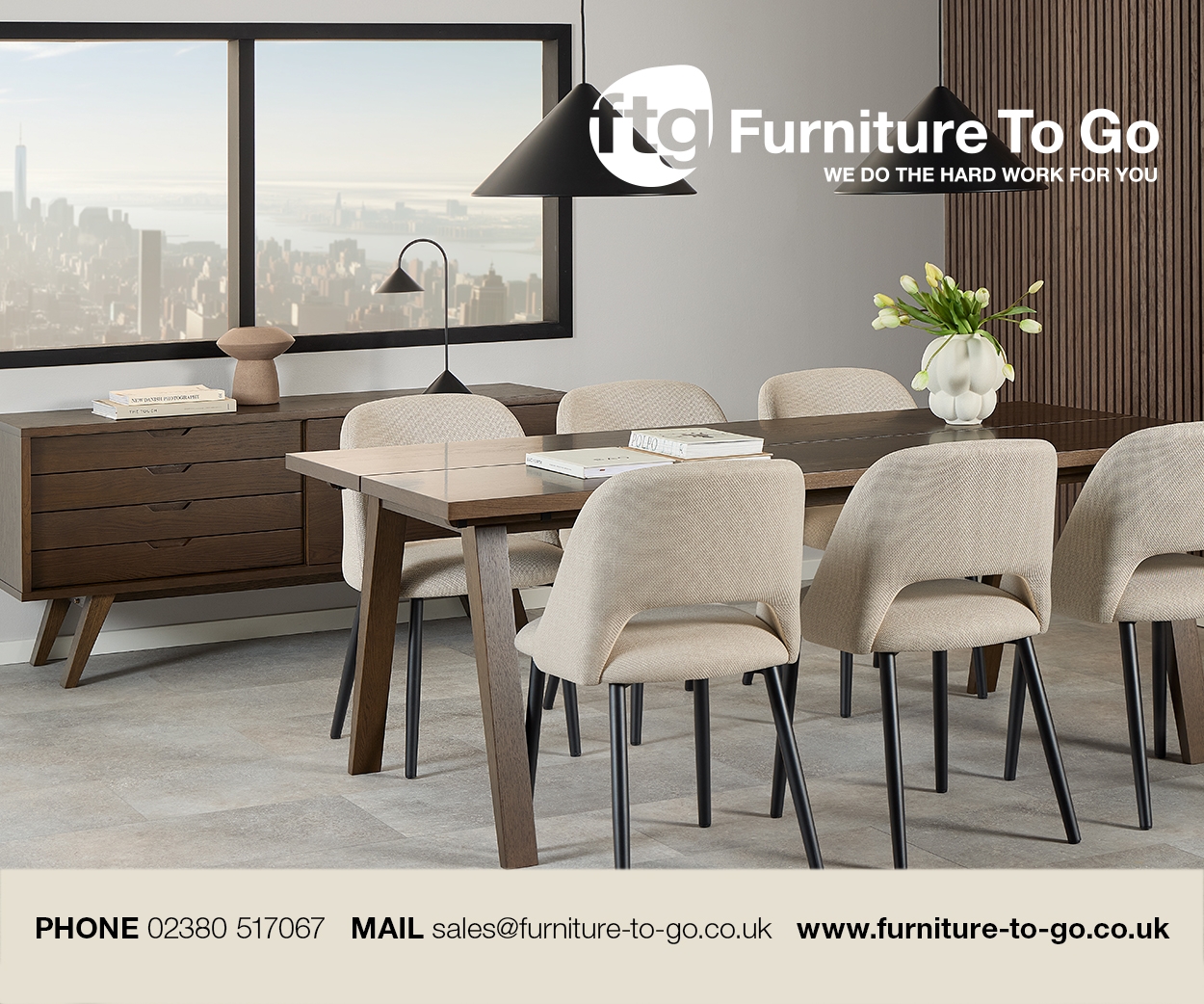Running a furniture retail business without firm foundations is like trying to work on a wobbly table – frustrating and often fruitless, writes our US correspondent Gordon Hecht, business growth and development consultant to the retail home furnishings industry …
Few things are more frustrating than a wobbly worksurface. Whether you are writing, fixing something, cooking, or even reading – the parts or papers you need roll all over the place, and you gotta work twice as hard to get half as much done.
A table on a single thin pedestal would provide a less desirable solution, and adding a second support would not help firm up your surface. Three-legged, round tables are common, but they can often shift side to side. At a minimum, if you were designing a practical table or desk, you’d include four legs, and each would bear equal weight distribution.
It’s not a lot different from a logical business plan. A great idea is important to get started, but not enough. There are few books written about successful businesses that had the lowest price, and those books all start on chapter seven! Legendary service is necessary to stay in business – but first you must get people through the doors. And those of us in retail know that writing the sales is not the end of the journey, it’s just the start.
You already have the component parts to build your rock-solid worksurface – the task is to make sure that they are all of equal importance, and the same size. There’s no need to be on shaky ground with a balanced plan.
Leg one: Take care of the doors. Even if you only have one retail location, you have two doors to maintain. The first is the physical door to your store entrance. The front door of your store extends past the parking lot all the way to the street. To attract drive-by traffic, you need an attractive entrance – that means a freshly painted and completely lit and lettered sign, with up-to-date promotions on your reader board.
Next is the parking lot and sidewalk. If they look old and weathered, then your shopper is expecting the same look in your store. Clean glass with limited decals will look more inviting to guests than sun bleach and cracked signs that are taped to the window.
The second door is your digital door, also known as that annoying Inter-World-Wide-Webby thing. Yes, you’re required to maintain that, just like your physical front door, with fresh and current promotions, new attractive signage, and essential information like your store phone numbers, addresses with landmark locators (‘Across from Ginormous-Mart’).
Here’s the wild thing. All advertising you do drives people to your website, not your shop. Shoppers are far more likely to see your digital door before your physical door! If that door is boring, they won’t move forward towards transitioning from shopper to buyer.
Leg two: One costs $2.50 and the other costs $250, but they have both mastered Leg Two. Taco Bell and Disney World are on opposite ends of the price spectrum, but they both attract customers with bright displays, a friendly greeting, and something new. While one is mixing talking mice with space people, and the other creates yet another combination with cheese, beans, rice and tortillas, they both drive loyalty and new visitors by offering a customer experience.
Your store can’t have fireworks and a parade (or even free drink refills), but you can offer a unique shopping experience. It starts with a warm greeting at the door, and mixes with a little showmanship (entertainment and lively music) to enhance your mattress trials.
Just like Disney, you should ensure that all your cast members are dressed and groomed neatly and have a goal of providing a memorable experience. It’s also okay to mimic Taco Bell, who will tailor their offering to match their guests’ desire. Delete this ingredient, double something else … it’s all good at the ‘Bell. They even offer some packages to give their shoppers some value. Surely you can do that!
Leg three: Key Bank, a large, multi-state banking institution, once did a survey to see what services their customers wanted from a bank. They offered checking and savings accounts, money market accounts, car loans, home loans, investment and retirement accounts, and foreign currency exchanges.
Here’s what they found was most important to their customers – people wanted to be sure that when they put their money in the bank, it would be easy to get it out of the bank! In a few short words, their customers expected them to do what they said they were going to do.
It seems simple, but many retailers, online or in-store, break that promise every day. When you say their purchase will be delivered in 10 days, they expect it in 10 days! If you discuss a hassle-free exchange programme, then you’d better remove the roadblocks when you’re called upon to change out their purchase.
Selling is easy, but delivery is hard! We collect money in the front of the house, but we earn it in the back of the house. Be sure that your operations team can live up to the promises of you sales team. Make this your rule – under-promise, and over-deliver.
Leg four: This leg is the one that grows your business. It’s called follow-up and referrals. The gentleman who sold me the last suit I bought sent a thank-you card and called me to see if the suit still fits well. The dude who sold me my last new car forgot about me when he saw the tail lights. Customer loyalty is reciprocal – you gotta give it to get it.
There is plenty of time in our retail lives to contact a customer after delivery, just to see how they like it. Chances are good that their new items suit them fine. On the rare occasion that something doesn’t meet their expectations, the follow-up call can help you fix the issue before it appears on Facebook, Instagram and Google. Remember, it’s easier to put out a burning bush than a forest fire!
Another reason for follow-up is to ask for referrals. Legendary Customer Service is like common sense – neither is very common. When you have done a remarkable job of fulfilling your customer’s needs, you have earned the right to ask them to remark about it. A simple phrase like, “If you’ve enjoyed working with me as much as I’ve enjoyed working with you, I’d appreciate you telling a friend or neighbour about our store,” can gain you untold additional store traffic. You can even ask for a review on Facebook, Google or Yelp.
Start by creating a QR code that leads to your Google reviews page. The ideal time to get a review is when the shopper is in your store – some savvy retailers offer an incentive for reviews on the spot.
Retail is detail! There’s a lot of moving parts that need to be worked on daily, and starting with a four-leg foundation will help you deliver solid results! Look for your missing leg, or the one that comes up short, and remove that shaky wobble.
Gordon can be reached at [email protected].












